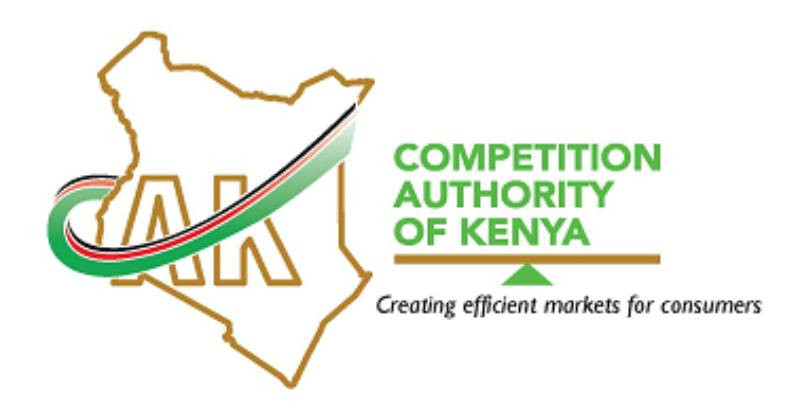
Whenever the Competition Authority of Kenya issues a penalty against a company for engaging in anti-competitive practices, some questions raised are; how does the regulator compute the penalty amount and what is the involvement of accused parties in this process?
These are critical queries, especially given the fact that these fines may run into the hundreds of millions of shillings.
Gerard Nyele of the Standard Group engaged the Authority's Acting Director-General, Dr Adano Wario, to appreciate this process, as highlighted in the Consolidated Administrative Remedies and Settlement Guidelines, which the regulator published recently.

Let us start at the beginning. Why do you fine companies?
The ultimate aim of enforcing the Competition Act is to ensure that you and I enjoy competitively priced goods and services of high quality. Effective competition also expands choice and promotes innovation.
To ensure compliance with the law, the Authority deploys hard and soft enforcement. Hard enforcement entails an investigation which may result in fines and penalties, which is the focus of our discussion.
We also use advocacy initiatives where we appeal to behaviour change by businesses This is achieved through sensitization and education about the law, the benefits of compliance, and the consequences of non-compliance.
With regard to compliance approaches, briefly explain the Authority's investigation process and how you make determinations
The Authority has a dual mandate - competition enforcement and consumer protection. Our main technical units are mergers and acquisitions, enforcement and compliance, buyer power and consumer protection.
In each of these areas, there are violations in our markets which may result in administrative sanctions or financial penalties. Administrative sanctions include cease and desist orders and other conditional requirements aimed at remedying the issue.
Our investigative process entails sequential steps of complaint receipt, fact-gathering, responses by parties, hearing conference, and issuance of proposed and final decisions to the parties. This entire process is transparent, predictable, accommodative and aligned to the tenets of fair administration of justice.
Suppose an investigation is borne of a complaint by an individual against a business, we interrogate the allegation, review the evidence, and afford the accused party time to respond.
Consequently, if there is credible evidence to enable the Authority to determine the accused has a case to answer, a notice of proposed decision is issued and the accused is again granted an opportunity to verify the evidence and offer their counterarguments. Upon concluding this process, and whether or not we reach an agreement, the Management submits the proposed decision to the Board for their consideration and issuance of a determination.
The determination outlines the procedural matters of the case, articulates the facts and evidence relied on and provides a computation of penalty imposed, where applicable.
Stay informed. Subscribe to our newsletter
Let us now focus on the Consolidated Administrative Remedies and Settlement Guidelines, which you recently published. What is their main objective?
As previously stated, the Authority aspires to be transparent and predictable in its decision-making process. We do not conceal our modus operandi under the table and then reveal them during negotiations. There are numerous instances when cases are closed for lack of executable evidence.
In a nutshell, the Guidelines outline the methodology we shall apply when determining administrative remedies, including fines, and settlements.
Previously, each of the four technical units of the Authority had its own reference document. This was an ineffective and confusing model to stakeholders. We have now consolidated them into one document, albeit with some moderations to accommodate our experiences and learnings during the implementation of the law.
The Guidelines, among other things, aim to ensure there is proportionality in the remedies imposed against the gravity of harm and enhance consistency in our decision-making. So basically, if an undertaking contravenes the law, they have access to our rulebook even before appearing in our offices.
However, I should reiterate here that the Guidelines are not a substitute for, or more superior to, the Competition Act.
Let's dissect the Guidelines a bit further. The Authority is permitted to penalize businesses up to 10% of their turnover. How do you compute the final penalty amount?
As you have correctly noted, the Competition Act permits the Authority to penalize undertakings up to 10% of the undertaking's gross annual turnover for the year preceding our determination. However, some stakeholders argue that we should restrict the penalty to the product in question. That is a misleading position.
The Competition Act and the Guidelines are now aligned. When we determine a party has infringed the law, we start at the aforementioned 10% as the base rate. Then we ask ourselves - what issues specific to the case can reduce the severity of the penalty (mitigating factors), and which ones can increase it (aggravating factors)?
Each aggravating and mitigating factor has a score of between 0% and 3%, either increasing the party's exposure or reducing it. For instance, assume a business has violated the rights of a consumer, we take note of their gross annual turnover for the preceding year, the 10% base rate and then consider aggravating factors, starting with the nature of the company's contravention.
For instance, unconscionable conduct, where businesses exploit consumers, is scored higher than false and misleading representations. We also consider the geographic coverage of the conduct, was it nationwide or just one county? Another consideration is the duration of the conduct and the financial harm to consumers. In addition, higher scores are given for repeat offenders as well as refusal to cooperate with the Authority during investigations.
Subsequently, we arrive at the final percentage of the penalty imposed and communicate it to the party under investigation.
Sometimes the penalty imposed may be deemed too high and crippling to the party, albeit being within the permissible 10% ceiling. Do you consider this reality?
Yes, the mitigating factors I have just talked about take into account such exceptional circumstances. The Authority may, and has on occasion done so, allow businesses to settle penalties in reasonable instalments which are mutually agreed during the settlement process.
However, in determining the number of instalments and amounts, the undertaking is required to demonstrate that a lump sum payment would jeopardize its ability to remain in business.
Briefly comment on settlement negotiations and agreements. How are they structured?
The Competition Act permits any undertaking to, at any time during an investigation, initiate and enter into settlement negotiations with the Authority. In this negotiated process, the party under investigation submits their proposal which the Authority reviews and accepts or counters. The negotiations are an interactive process involving a series of meetings which are typically conducted within 90 days.
Settlement negotiations are considered on a case-by-case basis but are governed by the principles of expediency and good faith. This approach is less adversarial and resource-consuming than hard enforcement which, sometimes, leads to appeals at the Competition Tribunal and the High Court, whose decision is final.
INVESTIGATION PROCESS UNDER THE COMPETITION ACT